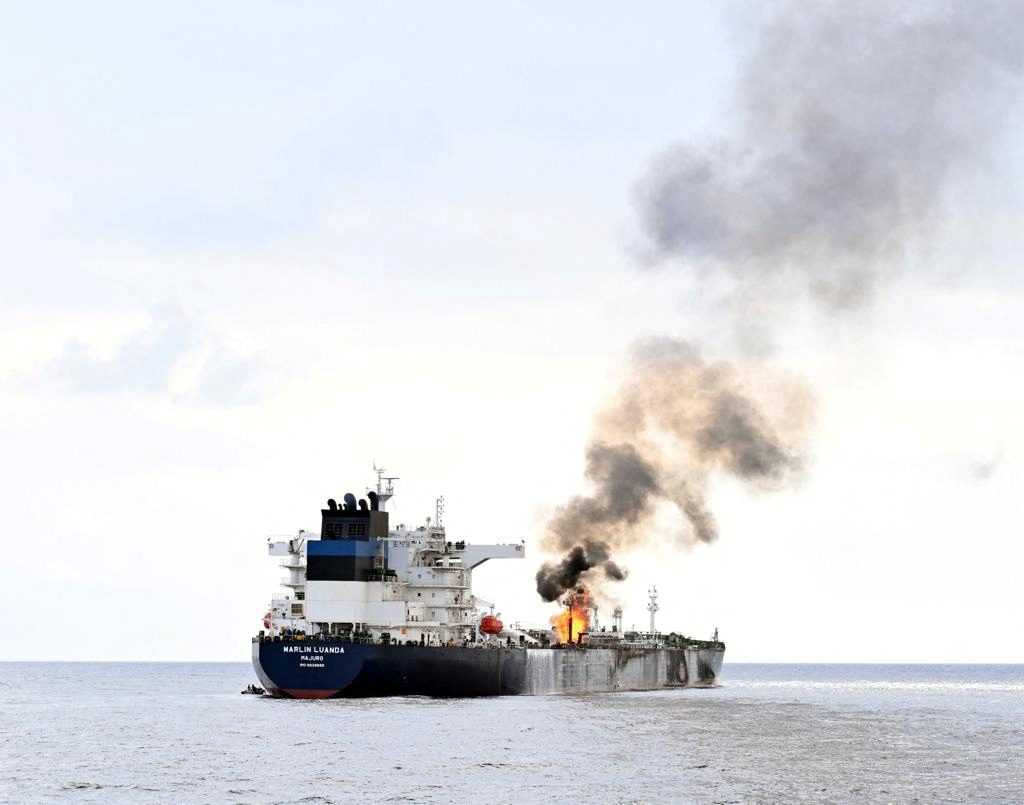Image (c) Robert Almeida/gCaptain
(Bloomberg) — Oil traded near its lowest in a week in New York on speculation that an increase in U.S. crude stockpiles signaled slowing demand in the world’s biggest consumer of the commodity.
Futures slid as much as 0.8 percent after the industry- funded American Petroleum Institute said inventories rose 1.35 million barrels last week. Year-to-date gasoline demand in the U.S. is 4.4 percent below 2011 levels, MasterCard Inc. said yesterday. Oil pared losses as the dollar weakened for the first time in six days against the euro, bolstering the appeal of commodities. Prices are too high for the “fragile” global economy, Fatih Birol, the International Energy Agency’s Chief Economist, said in an interview with Bloomberg Television.
“Demand is looking soft, and gasoline consumption in the U.S. is still weak,” said Carsten Fritsch, an analyst at Commerzbank AG in Frankfurt, who estimates Brent should slide toward $100, based on physical supply and demand. “The outlook right now is neutral to bearish.”
Crude for September delivery decreased as much as 70 cents to $87.80 a barrel in electronic trading on the New York Mercantile Exchange. It was at $88.67 at 12:26 p.m. London time. Oil fell yesterday as low as $87.43, its weakest since July 17. Prices are down 10 percent this year.
Brent crude for September settlement on the London-based ICE Futures Europe exchange fell as much as 65 cents, or 0.6 percent, to $102.77 a barrel. The European benchmark was at a $14.71 premium to the New York-traded West Texas Intermediate grade, from $14.92 yesterday.
Fuel Stockpiles
Oil in New York has technical support at $86.25 a barrel, along the lower of two so-called leading span lines that define an “ichimoku cloud” on the daily chart, according to data compiled by Bloomberg. The cloud is an area where buy orders tend to be clustered. Last week’s price increase stalled near the upper boundary, signaling chart resistance.
U.S. gasoline inventories increased 2.35 million barrels last week, according to the API. The Energy Department report today may show supplies shrank 1 million barrels, according to the median estimate of 11 analysts surveyed by Bloomberg.
The API collects stockpile information on a voluntary basis from operators of refineries, bulk terminals and pipelines. The government requires that reports be filed with the Department of Energy for its weekly survey.
“Yesterday’s API data was bearish,” Stephen Schork, president of The Schork Group Inc. in Villanova, Pennsylvania, said in a note. “If the DOE publishes a similar report we doubt the bulls will get another run at $90 this week.”
U.S. fuel consumption last week was 4.4 percent below the year-earlier level, MasterCard Inc. said in its SpendingPulse report yesterday. That’s the 47th straight drop in the measure. Year-to-date gasoline demand is 4.6 percent below 2011.
Chinese Economy
China sees “obvious” signs of stabilization in its industrial output growth and the fundamentals are still sound, Zhu Hongren, a spokesman for the Ministry of Industry and Information Technology, said at a briefing in Beijing today.
The nation’s economy is bottoming out now and will probably show a “slight improvement” this quarter, Markus Rodlauer, head of the IMF’s China team, said in a Bloomberg Television interview. In a separate statement, the Washington-based lender urged China’s leaders to boost consumption and channel citizens’ savings away from housing.
Goldman Sachs Group Inc. reiterated its recommendation to buy September WTI futures, citing a “tightening balance” in physical oil markets amid sanctions on Iran. The call, first made in February, has so far returned a loss of $19.41 a barrel, the bank said in a report e-mailed today.
Iran Talks
Iranian and European Union officials met yesterday to prepare for another possible round of talks on the nuclear program that has prompted the sanctions against Iran, the second-biggest crude producer in the Organization of Petroleum Exporting Countries after Saudi Arabia.
The meeting in Istanbul was between Helga Schmid, deputy head of the EU’s foreign relations arm, and Ali Bagheri, the Iranian deputy negotiator on the nuclear issue. It will be followed by contact between EU foreign policy chief Catherine Ashton and Saeed Jalili, Iran’s chief negotiator, Ashton’s office said, without giving details of the talks.
The U.S. and its allies have raised concern that Iran may be concealing a nuclear-weapons program, a charge the Persian Gulf nation rejects. The EU imposed an oil embargo against the country on July 1, while the U.S. has applied financial and trade restrictions. Iran produced 3.2 million barrels a day of crude in June, according to estimates compiled by Bloomberg. Saudi Arabia pumped 9.8 million a day.
Unlock Exclusive Insights Today!
Join the gCaptain Club for curated content, insider opinions, and vibrant community discussions.

 Join The Club
Join The Club













